A few weeks back I wrote about the new Ford Explorer – one of the few mid-sized, three-row SUVs available in a segment dominated by car-based crossover SUVs.
The Explorer is rear-drive and offers 4WD – as opposed to the usual crossover FWD/AWD layout.
This week’s review is about one of the few remaining mid-sized, two-row SUVs in the same class that is available with something the Ford doesn’t offer:
A two-speed transfer case and 4WD low range gearing.
Plus massaging seats.
Plus something else.
What It Is
Unlike the Ford Explorer – which became a crossover for awhile – the Jeep Grand Cherokee has always been an SUV.
It is now the only SUV in this class that’s still available with a V8 engine.
So equipped, it has much more towing capacity (7,200 lbs.) than other SUVs in the class like the Ford Explorer and the Toyota 4Runner – and far more off-road capability than the crossovers in this class that look like SUVs.
Prices start at $37,390 for the base rear-wheel-drive Laredo trim; opting for four-wheel-drive raises the sticker price to $39,300.
There are six other trims available, including the Trailhawk – which comes with 4WD standard, plus a locking rear differential and adjustable ride height for extra ground clearance, an electrically decoupling front sway bar to allow for greater wheel articulation, revised bodywork for increased angles of approach and departure – the works riding on a set of Goodyear all-terrain tires.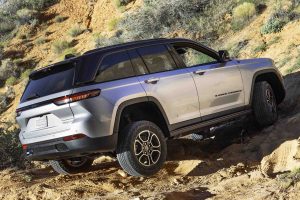
A top-of-the-line Summit Reserve, which comes with massaging seats, wood and quilted leather trim and an additional LCD touchscreen built into the front passenger’s side of the dashboard – for independent watching of streaming TV shows and such – lists for $63,3675.
In addition to that, there’s also a 4xe plug-in hybrid option on deck for later this year. This version of the GC will be able to travel about 25 miles on battery power alone. It will also be the most powerful version of the Grand Cherokee available.
Jeep hadn’t posted official prices for the 4xe when this review was written in mid- January, 2022 but they’re expected to be in the neighborhood of $50,000.
One option that’s no longer available is the Hellcat-hemi-powered Trackhawk – which was the most powerful GC, ever. This 707 horsepower SUV could run an 11 second quarter mile and haul an 11 second quarter mile supercar behind it, on a trailer.
Sic gloria transit mundi.
And Let’s Go Brandon.
What’s New
Everything.
Well, almost everything.
The ’22 GC gets a major redo after more than a decade in its prior form largely unchanged. Most of the obvious changes revolve around tech – and luxury – including the above-mentioned 10.2 inch front seat passenger-side LCD screen and Amazon Fire TV, an available fully-digital/configurable main gauge cluster for the driver, 19 speaker McIntosh audio system and those multi-mode massaging seats. 
The previous GC’s standard V6 and optional V8 engines carry over – which is near-miraculous news, given the pressure being applied to downsize engines and pair (or replace them) with electric motors.
There’s also a subtly reworked exterior look and a bit more room for cargo inside.
Interestingly, if these changes do not appeal to you, Jeep is still selling last year’s GC as a new 2022 model year vehicle, alongside the revamped 2022 model. The old (but still available, new) GC is now called the Grand Cherokee WK. It’s for the buyer who wants something new that’s also something old – and a bit less expensive ($35,865 to start).
Not just 4WD. Multiple 4WD systems, each varying in capability.
Available V8 engine.
Opulence – and capability – without compromising either.
What’s Not So Good
V8’s availability is limited to the Trailhawk, Overland and Limited trims.
Standard V6 isn’t as strong as some rival’s standard turbo’d fours.
RIP, Trackhawk.
The GC’s standard 3.6 liter V6 engine is larger than many rivals’ optional engines – including the Explorer’s top-of-the-line 3.0 liter V6.
It makes 293 horsepower – well below the 400 horsepower summoned by the Ford’s smaller, turbocharged V6. But Jeep doesn’t charge $47,175 for it – the MSRP of the Explorer ST equipped with the 400 horsepower V6.
Other versions of the Explorer come standard with an even smaller 2.3 liter four cylinder engine, also turbocharged. It makes 300 horsepower – dead heat with the Jeep’s standard V6.
Without needing a turbocharger.
Rear-wheel-drive and an eight speed automatic are standard.
Uniquely among its rivals, the GC is available with several 4WD systems, Quadra-Trac I, Quadra-Trac II and Quadra-Drive II. The lighter-duty Quadra-Trac works like AWD, routing power front to back as needed – but unlike most AWD systems is rear-drive-biased and features auto-decoupling (all of the engine’s power is sent to the rear wheels if no slip is detected). The Quadra-Drive II system boasts a 47.4:1 crawl ratio in 4WD Low.
The Explorer also offers 4WD – but just one type and without available Low range gearing.
The Toyota 4Runner – the other real-deal SUV in the class – does offer Low range gearing but nothing more under the hood than a 270 horsepower V6 (for $37,305 to start). The 4Runner is a superb off-roader and has a gold-plated reputation for being as reliable as a farmer’s anvil – but it’s also among the slowest and gas-hungriest SUVs you can still buy new, maxing out at 19 MPG . . . on the highway.
To put this in some context, the GC’s available 5.7 liter V8 makes 357 horsepower and still manages to rate 22 MPG on the highway – with 4WD (standard with the big engine). It’s also much quicker, getting to 60 in about 6.8 seconds, vs. 7.7 seconds for the smaller-engined 4Runner.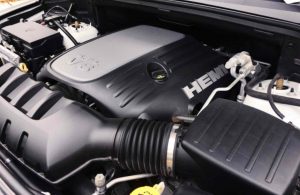
Ford’s Explorer is the hot-shoe of the bunch, though – notwithstanding its standard 2.3 liter engine is a tiny for a vehicle this size. And because it has such a little engine, it uses the least fuel – by far – of these three SUVs, managing 27 on the highway. Equipped with the 400 horsepower (and 415 ft.-lbs. of torque) turbocharged 3.0 liter V6, the Explorer can get to 60 MPH in the low five second range – the quickest time in the class – while still returning 26 MPG on the highway.
But, the Ford is less capable off-road and in severe weather on road, such as the deep snow that’s piling up outside my window as I type this review up – because it isn’t available with the deep crawl ratio/leverage advantage of a two-speed transfer case.
It also cannot pull nearly as much.
The GC – equipped with the V8 – has a max tow rating of 7,200 lbs. To be able to pull more, you’d need to go up a size to something full-sized, Like a Chevy Tahoe or Ford Expedition.
Even with its standard V6, the GC can still pull 6,200 lbs. – vs. 5,000 lbs. for the 4Runner and 5,600 lbs. for the Explorer (even when equipped with its optional and very pricey 3.0 V6).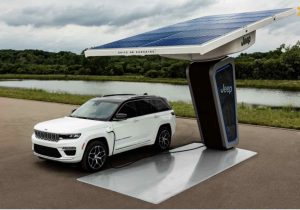
In a couple of months, GC buyers will also have that 4xe plug-in hybrid option to consider. It pairs a turbocharged 2.0 liter engine with a 400 volt battery pack and two electric motors. All together, the combo is expected to produce 375 horsepower and 470 ft.-lbs. of torque – making it the new GC’s most powerful and fuel efficient drivetrain option now that the Trackhawk is gone.
The 4xe drivetrain will come standard with the mid-tier Quadra-Trac II 4WD system (Quadra-Drive optional) and a standard 6,000 lb. maximum tow rating.
On The Road
When it snows – really snows, as it did during the week I was test driving the GC – you come to appreciate having an SUV with 4WD and Low range gearing in the driveway, as opposed to a FWD/AWD crossover. Eight inches of unplowed drift didn’t faze the GC anymore than a vertical cinderblock wall presents an impediment to the upward travel of a skink.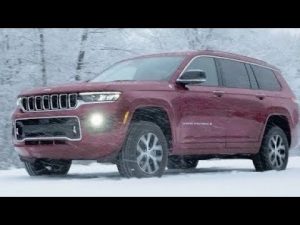
The GC’s snow-fording capabilities can be further augmented by specifying the available Quadra-Lift air suspension, which lifts the rig on command, via a toggle switch on the center console – increasing the available underbody clearance to 11.3 inches.
If you get stuck, it’s probably not the Jeep’s fault.
Aside from its real-deal capabilities – rare in a segment dominated by crossovers that look like SUVs – the thing that sets this Jeep apart is its last-of-the-Mohicans V6 and V8 powertrains. The standard V6 may not have turbo-boosted low-end torque, as the Ford Explorer’s stronger-feeling 2.3 liter turbo’d four does. But it also hasn’t got the turbo. Or the ten speed automatic.
Which would you rather have ten or twelve years from now?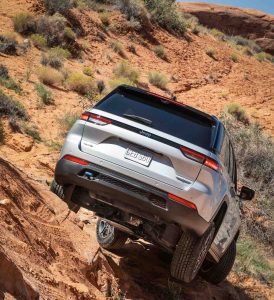
And how about that V8?
It’s the last call, probably. Jeep’s parent company, Stellantis, has already indicated this engine will soon be walking the Green Mile, with an EPA bureaucrat saying dead man walking behind it.
This is terribly sad.
However much horsepower multi-turbo’d V6s whelp up – however much torque electric motors deliver – there is no replacement for the reassuring rumble of eight coffee-can-sized pistons syncopating in their cylinders, the rage-against-the-dying-of-the-light that comes online somewhere past 6,000 RPM, wide open.
Does it suck a lot of gas? The proper question is – does it suck? And the answer is affirmatively opposite. You pay more for gas – on purpose – as the price of the pleasure. Besides which – again – no turbo. Which means less pressure on critical internals. Which probably means fewer problems, ten or twelve years from now.
The pending plug-in hybrid drivetrain is an interesting counterpoint. Now that the supercharged 707 horsepower V8 (from the Hellcat Charger/Challenger) is no longer available, it will assume Top Dog status as the GC’s most powerful drivetrain option.
It won’t have the most range, however.
Jeep says the 4xe will be able to travel about 440 highway miles (25 on battery power), which isn’t as far as the 506 highway miles the V8 powered GC can travel (on 23 gallons of fuel).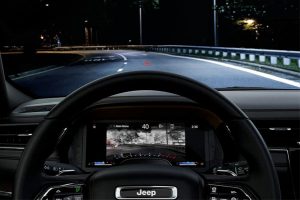
However, the V8 GC has to burn gas to travel any miles, at all. Theoretically, the 4xe could burn next to no gas, at all – if your trip there is 25 miles or less and even if it’s not, you’ll only be burning gas after you’ve burned through your 25 miles of range on battery power.
And the plug-in hybrid doesn’t have to stop when it exhausts its 25 mile range on battery power alone.
With a plug-in, you have a cord.
But (unlike an EV) you’re not tethered to it.
The new GC is slightly longer (193.5 inches) than its predecessor (189.8 inches) and slightly more roomy. Jeep says a bag of golf clubs can be fit inside the rear cargo area sideways now. But these differences are hard to tell if you don’t look closely.
The obvious differences are right in front of you.
Especially if you’re the front seat passenger, who faces his own independently operating LCD touchscreen – something only one other SUV (the GC’s big brother, the Grand Wagoneer)offers at the moment. It is part of the available Entertainment Group, which also includes individual touch screens for the backseat occupants. These can be used to Fire-stream movies from any of the services you have at home, such as Hulu, Prime and YouTube.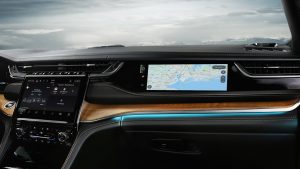
Trackhawk models get additional closed-circuit camera feeds for the wheels – so you can see where they are in relation to obstacles off-roading, without having to get out to have a look.
Infra-red night vision is available, too.
Plus those massaging seats – including a “rock crawl” mode, right up your spine.
Jeep went all-in on the luxuries, putting a Grand Canyon of distance between the Grand Cherokee and the very capable but very spartan in comparison 4Runner and the not-as-capable Ford Explorer.
It’s nice, too.
But not this nice.
And nice as it is, it’s not the hot ticket for eight inches of unplowed drift.
The Rest
If you need three rows of seats, Jeep has you covered. The GC is also available in “L” (long wheelbase) form – with the extra room for an extra row. And if you don’t want all the latest stuff, thanks very much, you can still get last year’s GC, brand-new.
And if you need something a little bigger – with three rows standard and the same V6 and V8 engine choices (plus the choice of one more – even bigger – V8) there’s the Jeep’s shared platform cousin, the Dodge Durango.
The Bottom Line
There’s probably a kitchen sink in here, someplace.
. . .
Got a question about cars, bikes, or Sickness Psychosis? Click on the “ask Eric” link and send ’em in! Or email me at [email protected] if the @!** “ask Eric” button doesn’t work!
If you like what you’ve found here please consider supporting EPautos.
We depend on you to keep the wheels turning!
Our donate button is here.
If you prefer not to use PayPal, our mailing address is:
EPautos
721 Hummingbird Lane SE
Copper Hill, VA 24079
PS: Get an EPautos magnet or sticker or coaster in return for a $20 or more one-time donation or a $10 or more monthly recurring donation. (Please be sure to tell us you want a magnet or sticker or coaster – and also, provide an address, so we know where to mail the thing!)
My eBook about car buying (new and used) is also available for your favorite price – free! Click here. If that fails, email me at [email protected] and I will send you a copy directly!


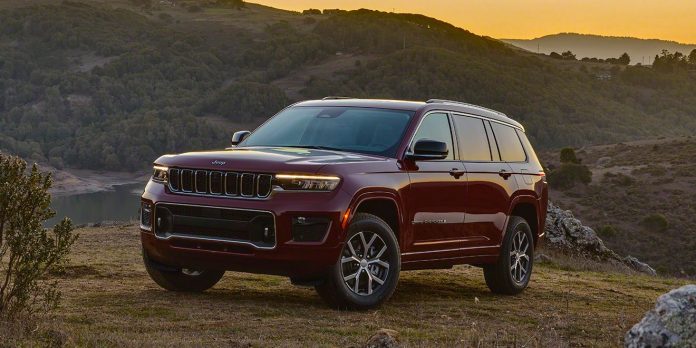


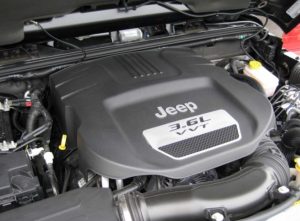
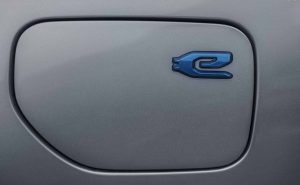








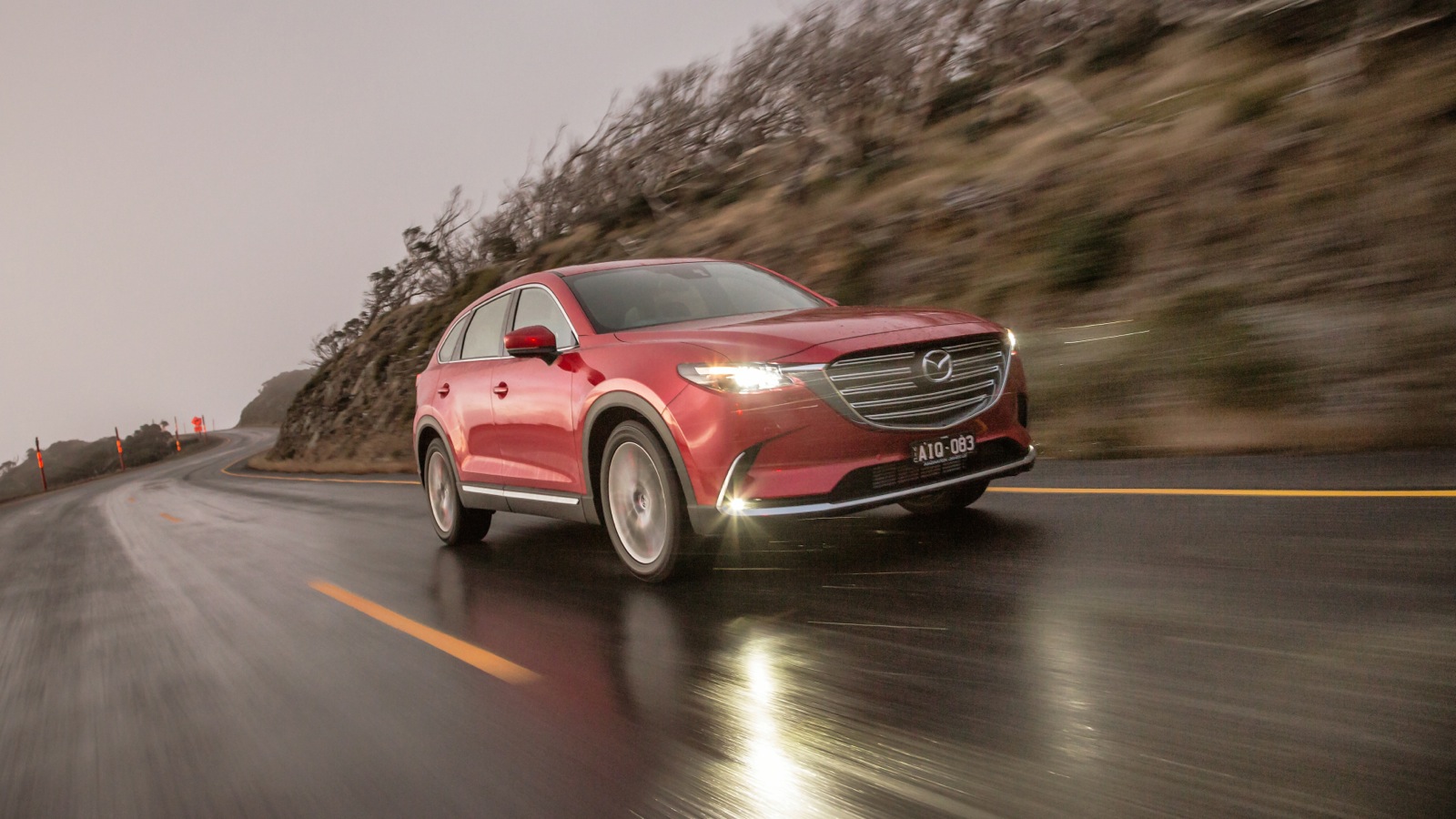
I recently had a 4runner rental and was very underwhelmed. The interior layout was very quirky. The view from behind the wheel was weird. It was a gas pig too! Would not consider it.
I see no reason to get rid of my 97 Suburban K2500 with the 454. So it sucks gas-sue me. It also pulls my camper like the thing almost isn’t back there. I’m good with that compromise.
Did they ever improve the seats? My 2018 Limited has a great name, as, you’re Limited to about an hour before the discomfort drives you out for a break. Isn’t just me – wife, daughter and grandson agree. Too narrow, too little padding and the seat back side bolster airbag eats into your side. Wish I’d kept my 2005 GC Limited what great seats.
Also the lack of straight line stability especially windy days. Dealer fix was a full alignment that only provided minimal improvement. New tires didn’t help either. Moms 64 Impala drove better than this mess.
The good, it’s quiet, gets good mileage and the V6 will tow the RPod trailer.
I agree with some of your observations Sparkey, with my ’19.
The seats are not the best. My Ram limited seats are better. But it may be because the GC is narrower?
Straight line stability is a small issue as well. I think it may have to do with the short wheelbase and the large amount of 4×4 running gear on a relative small vehicle? It has not bothered me too much though, and I recently put high-end tires on it, same small stability issue still present (me wife doesn’t notice it). I am comparing to my very long Ram which is rock solid at speed.
These two issues are not enough to sway me from buying another one though, as everything else important to me is probably the best in it’s class. RWD and V8 are my forever wants, although the V6 in these is really good.
Maybe Eric can advise on our two issues with the new one (I’m still buying though).
ps: i theorized my straight line stability issue was because we had the heavier V8 in ours, but must not be the issue since yours is a V6.
The new one is a new chassis with older drivetrain, so hopefully Eric was able to get it on the interstate for advice.
Seats, yes narrow and they are inboard of the door opening several inches more than my older Jeep, doesn’t help. My guess due to crash survival requirements.
The old Jeep, 2005 Grand Cherokee drove like it was on rails even with 165K miles. I wonder if part of the problem is electric assist power steering, I had a 99 Pontiac with electric steering it didn’t drive worth a damn either. The 05 Jeep still had hydraulic power steering.
I should have rented a GC first, a long drive is the only way to know if it’s going to work out. We had a Ford Escape as a rental for a week back in 2003, I bought one soon after we got home what a great rig that worked out to be! We still have it today, plan to keep it till the kids haul me off to Shady Acres.
hmmm, could be. Mine is really not bad enough to be concerned about it. I think its just me being a weird engr., as my wife and daughter drive it a lot and have never said anything. Maybe drive another one to see if something is wrong with yours.
If you have air ride it must be aligned in the low highway setting.
Or drive the new one on the interstate and trade up (at has a new chassis), I’m sure they would love to have an ’18 with low miles.
Once the Hemi is gone, Chrysler will have nothing unique anymore. I know for me, the Hemi basically is the only reason WHY I would want to buy something new from Chrysler. I could see the writing on the wall with the cars losing the V8, but it’s a huge mistake on their part to think that new hybrid V6 is going to satisfy RAM buyers. It won’t.
Granted Toyota has bailed on the V8 in the Tundra already, but they aren’t dependent on pickups to make money. I don’t see either GM and Ford keeping V8’s in pickups much longer either, but I figured RAM would be the holdout of the big 3. Is it Nissan at this point going to be the last seller of V8 pickups?
The few people that buy electric vehicles, are the same folks who never buy Chryslers…….
They need Sergio Marchionne so badly now. He seemed to be the last to fight to keep V8’s.
Was hoping to get one new Hemi in my garage. Doesn’t look too likely anymore.
I second that, Rich –
Without the V8, the Ram (and other FCA/Stellantis) vehicles lose the main thing that sells them. The Charger is a nice sedan. But without the V8, it’s just another sedan, nothing especially special about it. The truly tragic thing is that the current boss of Dodge, Kuniskis, knows it. But he’s been backed into a corner by forces out of his control. I can’t speak for him, but if I were in his position, I’d hold a press conference and explain the truth to people. Of course, it’d be my final act as boss… but so be it. Better, in my view, to go down fighting than to be a silent accomplice to this vicious farce.
Great points Rich and Eric. I agree.
I hate to admit it though, but when we go to replace our GC and Ram, and that’s all they have is a blown V6, I will hold my nose and buy it anyway. Darn it….. And I’ll be pissed about it, so the vehicle becomes less important to me, which means it frees me up from giving a crap, and I’ll hammer the poor thing till it pukes, haha….
I will do my best to buy the last V8’s though which buys us some more time, and maybe just keep them a lot longer than we usually do.
Thanks for the GC review Eric. We own a ’19 V8 and love it. My wife calls it her red rocket. Ours is a mid-upper level trim but has air ride which is great. Quiet, fast, good ride, good room, awesome all weather. Or course I love the RWD, and it’s noticeable.
When we were ready to buy I had her drive the V6, but there were no V8’s to test drive, so the dealer let us drive his. She said no question, V8. Took a while to find one.
If/when they announce the V8 will be going away we will go get another one asap.
Can you let me know if the new one is any wider than the old one? 4″ longer is OK. Our garage is very tight, enough so that she has to fold the mirrors to fit.
Thanks.
Hi Chris,
The new GC is exactly 1 inch wider – 77.5 inches vs. 76.5 for the old model. It ought not to be an issue – unless your garage is really tight!
1″ will work, but she will have to be even more careful. It is tight now, guessing about 6″ on the left if you put the right mirror close as ya can, with them folded.
I think the explorer is even wider?
Thanks
Actually, if one desires an actual 4wd SUV, the Jeep is the ONLY hoice.
I traded a 2012 GC in for my current 2018 4Runner. The GC was more polished and had some good points. The large 25+ gal gas tank IIRC was a great feature on long road trips. Very comfortable and able to accelerate fast. One of the annoying things was the placement of the spare tire in the compartment. If you had a flat everything had to come out. Not a huge amount of aftermarket modification parts.
I liken my current 4Runner to a Lego set for adults. However you wish to modify it the parts are out there. Smaller gas tank though and an underpowered engine, but to be fair the 4Runner is not a lite vehicle. It seems like the age of the American shade tree mechanic and back yard modifiers may be over though. Glad I was able to see the 60’s and early 70s. Neighbors had a Road Runner. I’ll keep my 4Runner until the end.
I like the 4 runner a lot. If I were to buy an SUV, it would either be a 4 runner or a GX. I’m guessing that platform, which is the Prada in the rest of the world, is the number one selling SUV platform worldwide. If it’s not the top seller, it’s definitely the most desired. Everyone in the rest of the world wants one.
I like the 5.7 V8 in the Jeep, but they’ve never really mastered the automatic transmission over there. If you’re buying one of their HD trucks, you need to limit your search to trucks with the Aisin transmission, in other words, you need a Ram truck with a Toyota transmission.
Off road, I’d probably prefer the 4Runner over the GX. The 4Runner is a bit lighter, and even though the GX comes with a V8 (for now) the lighter truck is going to handle most off road situations better. The GX also has some low hanging body work that I’d assume impacts approach and departure angles.
You have a really nice truck.
Great article Eric! I really appreciated the fair comparisons made. If I were in the market for a new SUV, you made a good case to look at something besides the 4Runner.